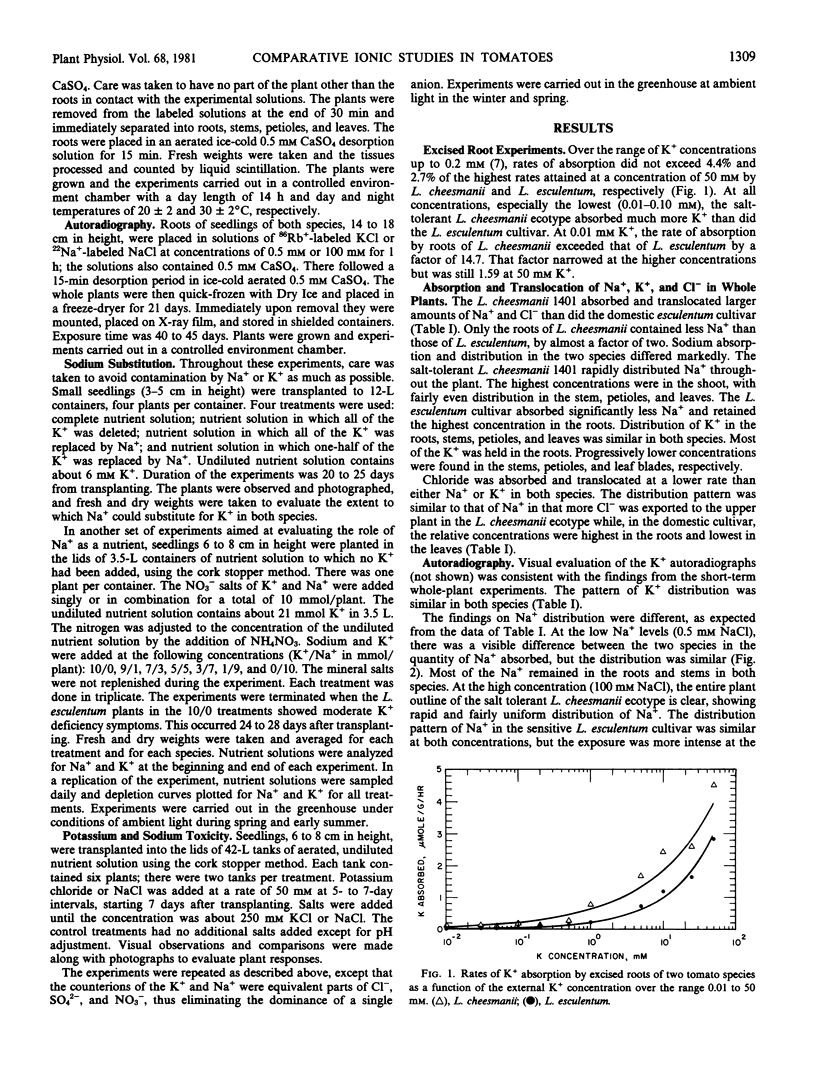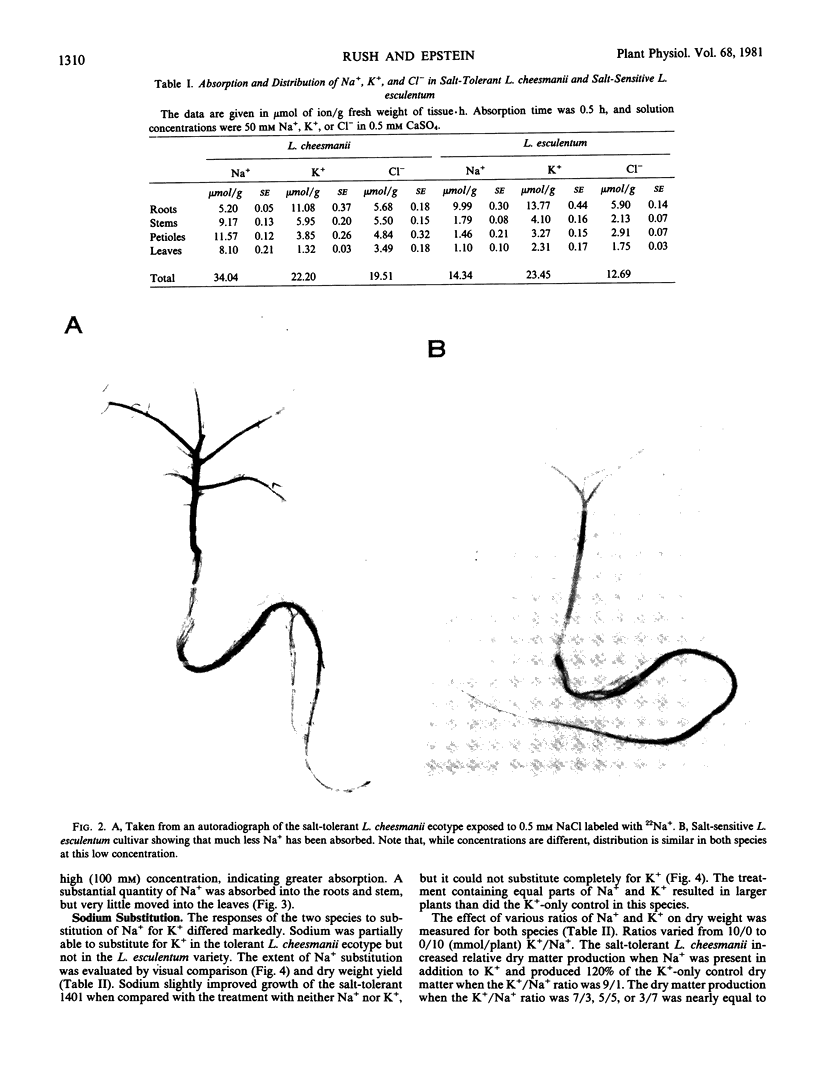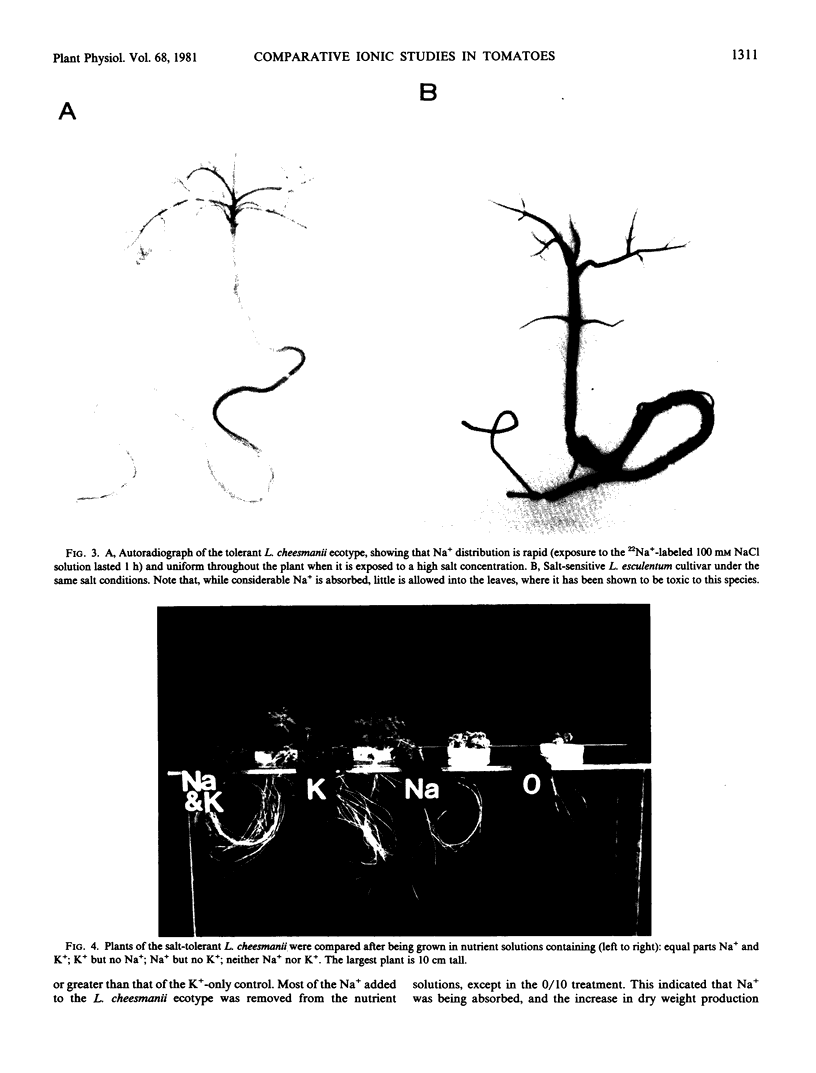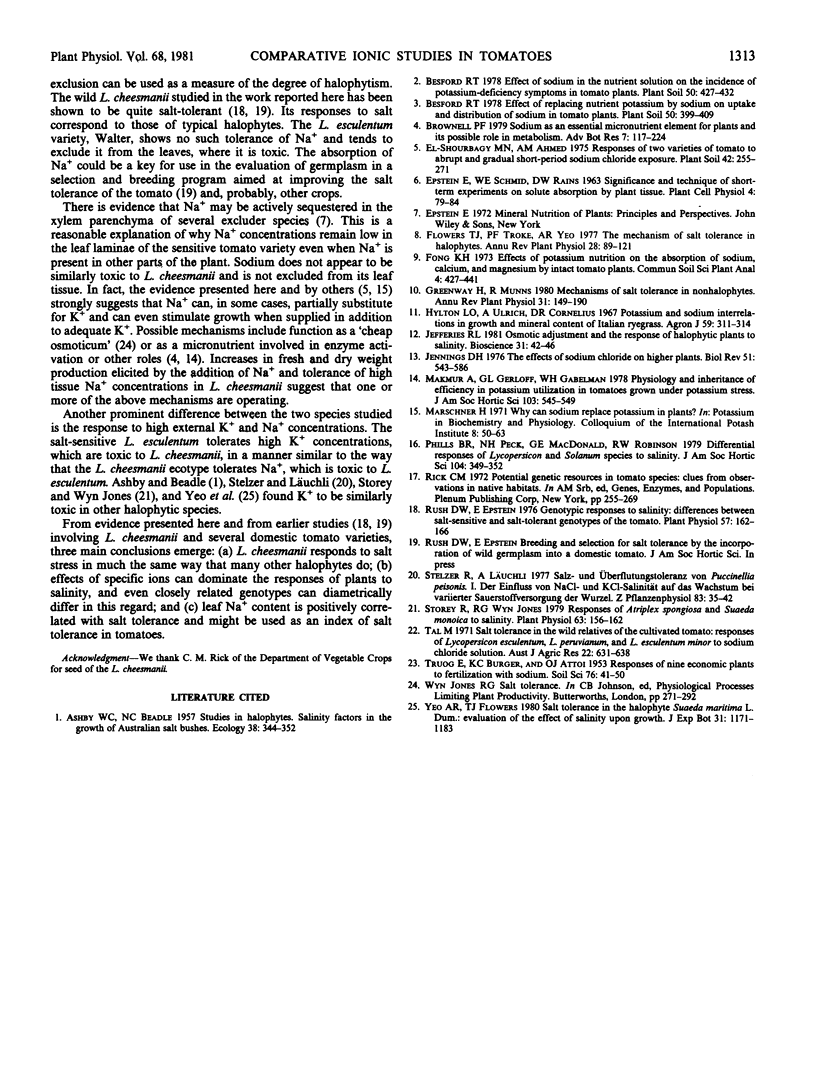Abstract
In long-term experiments with differentially salinized nutrient solutions, plants of Lycopersicon esculentum Mill cv. Walter failed at Na+ concentrations of 200 millimolar or more but tolerated K+ concentrations of that magnitude. The behavior of the wild, salt-tolerant Lycopersicon cheesmanii (Hook) C. H. Mull., accession number 1401, was diametrically different; it tolerated Na+ at 200 millimolar, but K+ at the same concentration proved toxic to it.
Short-term comparative studies on the absorption and translocation of Na+, K+, and Cl− of the two species were carried out using radioactive tracers with excised roots and whole plants. These studies showed that, under high salt conditions (50-100 millimolar NaCl), the tolerant 1401 freely accumulated Na+ in the shoot, while the salt-sensitive cultivar excluded it from the leaves, where it has been shown to be toxic.
In experiments where K+ was limiting, the salt-tolerant species could partially substitute Na+ for K+. Sodium stimulated growth even when K+ was present at adequate concentrations. The domestic cultivar could not substitute Na+ for K+ and showed no similar growth stimulation when Na+ was added in the presence of adequate K+. The salt-tolerant 1401 was more efficient in K+ absorption than was the domestic cultivar at both low and moderate ambient K+ concentrations.
The two species differed little in their chloride relations.
Full text
PDF





Images in this article
Selected References
These references are in PubMed. This may not be the complete list of references from this article.
- Rush D. W., Epstein E. Genotypic Responses to Salinity: Differences between Salt-sensitive and Salt-tolerant Genotypes of the Tomato. Plant Physiol. 1976 Feb;57(2):162–166. doi: 10.1104/pp.57.2.162. [DOI] [PMC free article] [PubMed] [Google Scholar]
- Storey R., Jones R. G. Responses of Atriplex spongiosa and Suaeda monoica to Salinity. Plant Physiol. 1979 Jan;63(1):156–162. doi: 10.1104/pp.63.1.156. [DOI] [PMC free article] [PubMed] [Google Scholar]





